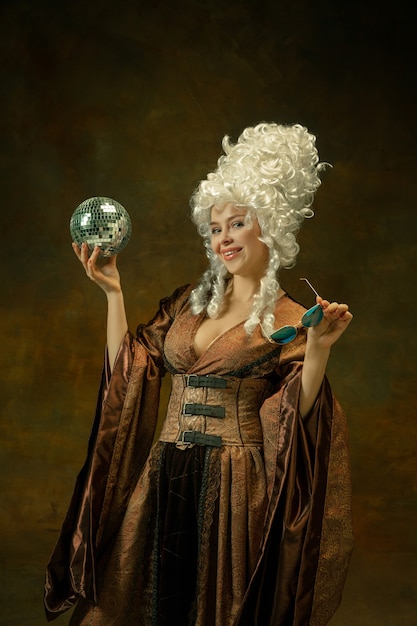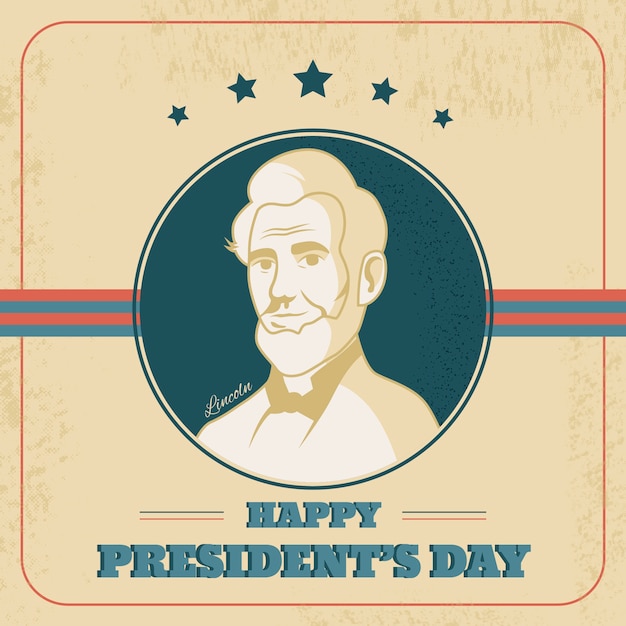Fascinating Facts about Presidents Day
Presidents Day is observed on the third Monday of February.
The holiday was originally established to honor George Washington’s birthday.
Presidents Day is a federal holiday in the United States.
It is a day to celebrate and recognize the contributions of all U.S. presidents.
Presidents Day is also known as Washington’s Birthday in some regions.
The first official observance of Washington’s Birthday took place in 1880.
Initially, the holiday was only celebrated in Washington D.C.
President Abraham Lincoln’s birthday, which falls on February 12, is also closely associated with Presidents Day.
Many schools and government offices are closed on Presidents Day.
Presidents Day is often used as an opportunity for retailers to offer sales and discounts.
The holiday is a time to reflect on the achievements and legacies of past presidents.
Some people use Presidents Day as a chance to volunteer and give back to their communities.
Many cities and towns host parades and events to celebrate Presidents Day.
Presidents Day is a reminder of the importance of leadership and civic duty.
It is a day to honor the democratic principles upon which the U.S. was founded.
Presidents Day is a time to appreciate the privileges and freedoms of living in a democratic society.
It is an occasion to educate and engage in discussions about the presidency and its impact on the nation.
The official name of the holiday was changed from Washington’s Birthday to Presidents Day in 197
The change was made to include recognition of all past and future presidents.
Some states still celebrate individual presidents’ birthdays as separate holidays.
Presidents Day is a popular time for families to take vacations or enjoy a long weekend getaway.
It is an opportunity to visit historical sites and landmarks associated with past presidents.
Presidents Day has inspired many sales and marketing campaigns centered around presidential themes.
The holiday encourages patriotism and pride in the country’s political history.
It is a time to remember the sacrifices and challenges faced by presidents in their leadership roles.
Presidents Day coincides with other holidays in some states, such as Valentine’s Day and Family Day.
Some people use the day off to catch up on political news and current events.
Presidents Day reminds us of the importance of the peaceful transition of power.
Many schools organize educational activities and projects related to Presidents Day.
The date of Presidents Day was moved to create a three-day weekend for employees.
It is a time for citizens to exercise their rights and participate in civic engagement.
Presidents Day serves as a reminder that anyone can aspire to become president.
The holiday honors the office of the presidency, rather than any particular individual.
Presidents Day celebrations often involve patriotic music, flags, and decorations.
The White House usually holds special events on Presidents Day.
Some people take the opportunity to dress up as their favorite presidents on Presidents Day.
Presidents Day is a time to reflect on the challenges faced by the nation and its leaders.
It is a day to celebrate the diversity of presidents who have served the country.
Many presidential libraries and museums offer discounts or special events on Presidents Day.
The history and significance of Presidents Day are often taught in school curriculum.
The holiday is celebrated not only in the United States but also by Americans living abroad.
Presidents Day represents the values of democracy, leadership, and freedom.
It is an occasion to remember and learn from the accomplishments and mistakes of past presidents.
Presidents Day reminds us of the power and influence that comes with the presidency.
It is a day to inspire future generations to become engaged in public service and leadership.
Platypus – Fascinating Facts about this Unique Mammal
The platypus is a unique and fascinating creature found in Australia.
Despite its appearance, the platypus is not a combination of other animals, but a species of its own.
Platypus males have venomous spurs on their hind legs, making them one of the few venomous mammals.
Platypuses are excellent swimmers and spend most of their time in water.
They have webbed feet and a beaver-like tail, which helps them navigate through water.
Platypuses have a special membrane that covers their eyes and ears when they dive underwater.
With their bill, platypuses can detect electrical fields generated by their prey in the water.
Unlike most mammals, platypuses lay eggs instead of giving birth to live young.
The female platypus hatches the eggs in a burrow and produces milk to feed her young.
The platypus is one of the few mammals that has the ability to produce venom.
Platypus venom is not lethal to humans, but it can cause extreme pain and swelling.
Platypuses have waterproof fur that keeps them warm and dry in water.
They have a thick layer of blubber to help insulate their bodies in cold environments.
Platypus populations are declining due to habitat loss and pollution.
Platypuses are primarily nocturnal and have a very low metabolic rate, allowing them to conserve energy.
The average lifespan of a platypus in the wild is around 10-12 years.
Platypuses have been a subject of fascination and curiosity since their discovery in the late 18th century.
The platypus is one of the few mammals that have the ability to use electroreception.
They can locate their prey by detecting electric signals from their muscles.
Platypuses have a limited ability to produce sounds, but they can communicate with soft growls and grunts.
The platypus is a highly efficient swimmer and can reach speeds of up to 7 kilometers per hour.
Platypuses have been known to dive and stay underwater for several minutes at a time.
The bill of a platypus is soft and rubbery, allowing them to sense and capture prey without injuring it.
The platypus is a solitary animal and prefers to live alone or in small family groups.
Due to their unique appearance and unusual characteristics, platypuses have inspired various myths and legends.
Platypuses have a high metabolic rate, and they need to eat a large amount of food to sustain themselves.
Their diet primarily consists of insects, small crustaceans, and other aquatic creatures.
Platypuses have cheek pouches where they can store food while they continue to hunt.
The reproductive system of platypuses is highly unusual, with males having a spur linked to the production of venom.
Platypus eggs take around 10 days to hatch, and the young remain in the burrow for several months before emerging.
The platypus has a streamlined body shape, making it well-suited for swift movement through water.
They use their tail to steer while swimming and their paws for propulsion.
Platypuses shed their fur once a year, creating a dense coat that helps them survive in cold water.
They have evolved to have a low body temperature, which allows them to conserve energy in their cold habitats.
Platypuses are excellent burrowers and can dig elaborate underground tunnels.
The platypus is one of the few mammals that can sense light through its skin.
They have a specialized gland in their skin that secretes a substance similar to milk, which nourishes their young.
Platypuses have a strong sense of smell, which helps them locate prey underwater.
The platypus is a symbol of Australia and is featured on the country’s 20-cent coin.
Despite being a popular animal, there is still much to learn about the habits and behaviors of the platypus.
Platypuses have small eyes, but their vision is well-adapted for both air and underwater environments.
The platypus is an important indicator of the health of freshwater ecosystems in Australia.
Platypuses have a strong immune system, which allows them to survive in various environments.
The platypus is a semi-aquatic creature, spending equal amounts of time on land and in water.
With its unique combination of features and adaptations, the platypus truly embodies the wonders of nature.
Fascinating Facts about Pitbulls
Pitbulls are known for their loyal and protective nature.
Despite their tough appearance, pitbulls are often affectionate and gentle with their owners.
Pitbulls are commonly used in therapy work due to their friendly and loving temperament.
Pitbulls are highly intelligent and trainable dogs.
Contrary to popular belief, pitbulls are not naturally aggressive towards humans.
Pitbulls are skilled escape artists and can figure out how to get through fences or open doors.
Pitbulls have a strong bite force, but this doesn’t make them inherently dangerous.
Pitbulls are great family dogs and are known for their positive interactions with children.
Pitbulls are often misunderstood and unfairly stigmatized due to negative media portrayal.
Pitbulls have a high pain tolerance, which makes them resilient in challenging situations.
Pitbulls require regular socialization and training to thrive as balanced pets.
Pitbulls have a muscular build that can make them excellent athletes in activities like agility training.
Pitbulls are known to be excellent swimmers due to their strong bodies and natural buoyancy.
Pitbulls have a unique ability to sense when their owners are feeling sad or upset and will try to comfort them.
Pitbulls have a strong prey drive, so it’s important to provide proper training and supervision around smaller animals.
Pitbulls come in various coat colors, including brown, black, white, and brindle.
Pitbulls have a history as working dogs, being used for tasks like herding cattle and guarding properties.
Pitbulls are highly adaptable and can thrive in urban or rural environments.
Many pitbulls excel in competitive dog sports, such as obedience, weight pull, and flyball.
Pitbulls are often used as search and rescue dogs due to their endurance and determination.
Pitbulls have a high energy level and require regular exercise to stay happy and healthy.
Pitbulls have a unique smile due to their strong jaw muscles, which can sometimes be mistaken for aggression.
Pitbulls are prone to certain health issues, such as hip dysplasia and allergies, but these can be managed with proper care.
Pitbulls have a strong desire to please their owners and are eager learners.
Pitbulls are often targeted by breed-specific legislation, despite the fact that individual behavior should be the determining factor for regulation.
Pitbulls have a powerful presence, making them excellent as therapy dogs in hospitals and nursing homes.
Pitbulls are known for their resilience and ability to bounce back from difficult situations.
Pitbulls have a natural instinct to protect their families and can be fiercely loyal.
Pitbulls are often used as service dogs for individuals with disabilities.
Pitbulls have a unique history, being descendants of bulldogs and terriers bred for specific purposes.
Pitbulls are capable of forming strong bonds with their human companions and often become velcro dogs who stick close to their owners.
Pitbulls have been successfully trained for various roles, including as police dogs and in military service.
Pitbulls are known to have a high pain tolerance, which can sometimes make them stubborn during training.
Pitbulls require consistent socialization from an early age to ensure they grow up to be well-behaved and confident dogs.
Pitbulls are often involved in therapy programs for veterans, helping them cope with PTSD and other mental health challenges.
Pitbulls have a powerful and distinctive bark that can be used as a deterrent to potential intruders.
Pitbulls are not inherently aggressive towards other dogs, but it’s important to introduce them properly and monitor their interactions.
Pitbulls have a signature wiggle butt when they get excited, which is adorably endearing.
Pitbulls are often misrepresented in popular culture and can be incredibly loving and affectionate pets.
Pitbulls require a strong and confident owner who can provide them with the guidance and structure they need.
Pitbulls are known for their determination and incredible work ethic, which makes them excellent search and rescue dogs.
Pitbulls are often used as therapy dogs for children with autism due to their patient and calm demeanor.
Pitbulls have a unique ability to sense danger and protect their owners, making them excellent guard dogs.
Pitbulls have a muscular build, but this doesn’t mean they are always looking for trouble – they often have gentle and playful personalities.
Pitbulls are not naturally more aggressive than other breeds; they simply need responsible ownership and proper training to ensure their positive traits shine through.
Fascinating Facts about Penguins for Kids
Penguins are birds that cannot fly but are excellent swimmers.
Penguins have a thick layer of blubber that keeps them warm in cold temperatures.
Most penguins live in the Southern Hemisphere, particularly in Antarctica.
Penguins have distinct black and white feathers that act as camouflage in the water.
Different penguin species have different markings and patterns on their feathers.
Penguins have a specialized gland above their eyes that filters out excess salt from seawater they ingest.
Penguins can dive deep into the ocean, some reaching depths of over 500 meters.
Penguins catch their prey, like fish and krill, by diving underwater and using their sharp beak to grab them.
Penguins live in large groups called colonies, which can include thousands of birds.
Penguins communicate with each other using various sounds and body movements.
Male and female penguins take turns caring for their eggs and young chicks.
Emperor penguins are the tallest and heaviest penguin species, reaching up to 4 feet in height.
Penguins can walk upright on land, and their waddling walk is adorable and unique.
Penguins have a thick layer of feathers that keeps them waterproof while swimming.
Penguins have a layer of fat underneath their skin that provides insulation in cold temperatures.
Penguins have great vision underwater, which helps them navigate and find food.
Penguins are excellent divers and can stay underwater for several minutes at a time.
Penguins have paddle-like flippers that help them swim quickly through the water.
Penguins have a lifespan of around 15-20 years in the wild, but some can live much longer in captivity.
Penguins molt their feathers once a year, during which they are unable to swim or hunt for food.
Penguins have excellent hearing and can detect underwater sounds made by their prey.
Penguins have a streamlined body shape that helps them swim efficiently in water.
Penguins have been around for millions of years and have adapted to survive in extreme cold conditions.
Penguins have a unique pattern on their chest called a belly-button. It helps scientists identify individual penguins.
Penguins have long beaks that help them catch slippery fish and other underwater creatures.
Penguins stay in large groups to keep warm and protect themselves from predators.
Penguins need a layer of blubber to survive in cold temperatures, which they build up by eating lots of fish and krill.
Penguins have a special gland near their tail that secretes oil, which helps waterproof their feathers.
Penguins can drink saltwater due to their specialized gland, but they mainly rely on consuming freshwater sources.
Penguins have to rely on their sense of smell to find their mate amidst the large colony.
Penguins can slide on their bellies to quickly move across ice and snow, a behavior known as tobogganing.
Penguins can recognize their own calls among a chorus of other penguin calls.
Penguins have a rapid heartbeat, which allows them to efficiently supply oxygen to their muscles while swimming.
Penguins have a layer of fat around their eyes that acts as a natural pair of sunglasses, protecting their eyes from the glare of the snow and ice.
Penguins use their wings to help them balance while walking on land.
Penguins build their nests out of rocks, stones, and feathers to protect their eggs and chick from the cold ground.
Penguins have excellent underwater vision, enabling them to spot prey even in dark and murky waters.
Penguins have strong flippers that they can use to slap the water’s surface to communicate with each other.
Penguins have a strong sense of direction and can find their way back to their colony even after swimming long distances.
Penguins have a unique way of keeping their eggs warm called brooding. They tuck their eggs under a special pouch of skin to keep them snug and safe.
Penguins have a natural instinct to huddle together in extreme cold temperatures, creating a warm microclimate for themselves.
Penguins have solid bones, which help them stay buoyant and swim effortlessly in the water.
Penguins have a strong homing instinct, and when they leave their colony during the breeding season, they can find their way back to the same spot the following year.
Penguins can recognize their parents by their unique calls, ensuring that they can find their way to safety and food.
Penguins have a strong community bond within their colony, often helping each other find food and protect against predators.
Interesting Facts about Patricia Bath
Patricia Bath was an inspirational African-American ophthalmologist.
Dr. Patricia Bath revolutionized the field of ophthalmology with her groundbreaking inventions.
Patricia Bath’s passion for medicine led her to become the first female African-American doctor at UCLA Medical School.
Dr. Bath’s invention, the Laserphaco Probe, changed the way cataract surgery was performed.
Patricia Bath’s contributions to medicine earned her multiple awards and recognition.
Dr. Bath’s groundbreaking research and inventions have improved the lives of countless patients.
Patricia Bath’s determination and perseverance helped her overcome obstacles and achieve great success.
Dr. Bath’s commitment to equality in healthcare paved the way for future generations of minority doctors.
Patricia Bath’s research focused on reducing visual impairment and blindness in underserved communities.
Dr. Bath’s dedication to her patients and her profession made her a highly respected figure in the medical community.
Patricia Bath’s work has left a lasting impact on the field of ophthalmology.
Dr. Bath’s inventions have made cataract surgery safer and more accessible to patients worldwide.
Patricia Bath’s innovation and ingenuity continue to inspire future generations of medical professionals.
Dr. Bath’s research on gender and racial disparities in healthcare has led to important advancements in the field.
Patricia Bath’s passion for social justice and equality is evident in all aspects of her career.
Dr. Bath’s pioneering spirit has made her a role model for aspiring doctors around the world.
Patricia Bath’s brilliance and dedication have earned her a well-deserved place in medical history.
Dr. Bath’s contributions to medicine are a testament to the power of perseverance and determination.
Patricia Bath’s commitment to improving vision care for all has made her a true champion for equality in healthcare.
Dr. Bath’s inventions have revolutionized the way eye diseases are diagnosed and treated.
Patricia Bath’s advocacy for preventative eye care has helped raise awareness about the importance of regular check-ups.
Dr. Bath’s research has uncovered new insights into the causes and treatments of glaucoma.
Patricia Bath’s work has empowered minority communities to take control of their eye health.
Dr. Bath’s determination to challenge the status quo has made her a trailblazer in the medical field.
Patricia Bath’s commitment to education has inspired a new generation of diverse doctors.
Dr. Bath’s laser technique for cataract surgery has significantly reduced recovery time for patients.
Patricia Bath’s research on disparities in vision care has led to policy changes aimed at addressing inequalities.
Dr. Bath’s advocacy for access to quality eye care for all has made a significant impact on underserved communities.
Patricia Bath’s dedication to helping the visually impaired has improved the quality of life for countless individuals.
Dr. Bath’s innovations have paved the way for advancements in other areas of medicine.
Patricia Bath’s commitment to diversity in the medical field has opened doors for underrepresented groups.
Dr. Bath’s life and achievements serve as a reminder of the importance of perseverance and breaking barriers.
Patricia Bath’s work has inspired young girls and women to pursue careers in medicine.
Dr. Bath’s inventions have made ophthalmology more inclusive and accessible.
Patricia Bath’s research on the effects of environmental factors on eye health has contributed to our understanding of the issue.
Dr. Bath’s determination to make a difference has changed the lives of patients around the world.
Patricia Bath’s unique perspective as an African-American woman has enriched the field of ophthalmology.
Dr. Bath’s commitment to mentorship has helped shape the careers of numerous aspiring doctors.
Patricia Bath’s dedication to eradicating preventable blindness has led to improved eye care practices.
Dr. Bath’s innovative thinking has challenged traditional approaches to eye surgery.
Patricia Bath’s research on the impact of socioeconomic factors on eye health has prompted important discussions.
Dr. Bath’s leadership in professional organizations has helped promote diversity and inclusivity in medicine.
Patricia Bath’s expertise in ophthalmology has been instrumental in advancing our understanding of eye diseases.
Dr. Bath’s perseverance in the face of adversity serves as an inspiration to all.
Patricia Bath’s legacy as a pioneering figure in ophthalmology will continue to inspire generations of doctors.
Facts about Parkinson’s Disease
Parkinson’s disease affects approximately 10 million people worldwide.
The disease was first described by James Parkinson in 18
3. Parkinson’s disease is a chronic, degenerative disorder of the nervous system.
The exact cause of Parkinson’s disease is still unknown.
Common symptoms of the disease include tremors, rigidity, and difficulty with balance and coordination.
Parkinson’s disease primarily affects dopamine-producing cells in a region of the brain called the substantia nigra.
The average age of onset for Parkinson’s disease is around 60 years old.
Parkinson’s disease is more common in men than in women.
Individuals with Parkinson’s disease may experience non-motor symptoms such as depression, anxiety, and sleep disturbances.
There is currently no cure for Parkinson’s disease, but treatments and medications can help manage the symptoms.
Deep brain stimulation is a surgical procedure that may be recommended for some individuals with Parkinson’s disease.
Regular exercise and physical therapy can help improve mobility and reduce symptoms in Parkinson’s patients.
Parkinson’s disease is not directly related to Alzheimer’s disease, although they both can cause cognitive impairment.
The progression of Parkinson’s disease varies from person to person, with some experiencing a slow decline and others a more rapid deterioration.
Genetic factors can influence the likelihood of developing Parkinson’s disease, but most cases are believed to be sporadic.
Parkinson’s disease is named after the British physician James Parkinson.
The severity of symptoms in Parkinson’s disease can be affected by stress and emotional factors.
Parkinson’s disease can also cause changes in speech, facial expressions, and swallowing abilities.
Dopamine replacement therapy is commonly used to manage the symptoms of Parkinson’s disease.
The average life expectancy for someone with Parkinson’s disease is around 10-20 years after the initial diagnosis.
Parkinson’s disease is often misdiagnosed in its early stages because its symptoms can resemble those of other conditions.
Participating in support groups can provide valuable emotional support and practical advice for individuals with Parkinson’s disease.
Some drugs used to treat Parkinson’s disease can have side effects such as hallucinations and compulsive behaviors.
Occupational therapy can help individuals with Parkinson’s disease adapt to changes in their daily routines and maintain independence.
Parkinson’s disease can lead to difficulties with swallowing, increasing the risk of aspiration pneumonia.
Sleep disorders such as insomnia and rapid eye movement (REM) sleep behavior disorder are common in Parkinson’s disease.
The wearing-off effect is a phenomenon where Parkinson’s medication becomes less effective over time, leading to fluctuations in symptom control.
Parkinson’s disease can have a significant impact on the quality of life of both patients and their caregivers.
Physical exercise has been shown to have neuroprotective effects and can help slow the progression of Parkinson’s disease.
The prevalence of Parkinson’s disease is expected to increase in the coming years due to the aging population.
The loss of the sense of smell, also known as anosmia, can be an early indicator of Parkinson’s disease.
Deep brain stimulation involves implanting electrodes in the brain to deliver electrical impulses and alleviate Parkinson’s symptoms.
Levodopa is a medication commonly prescribed for Parkinson’s disease that helps replenish dopamine levels in the brain.
Parkinson’s disease is associated with an increased risk of developing other conditions such as osteoporosis and melanoma.
The non-motor symptoms of Parkinson’s disease can often have a greater impact on daily life than the motor symptoms.
Parkinson’s disease does not typically cause muscle weakness, although it can lead to muscle stiffness and rigidity.
The Michael J. Fox Foundation is an organization dedicated to finding a cure for Parkinson’s disease.
In some cases, Parkinson’s disease can cause a mask-like facial expression, known as hypomimia.
Deep brain stimulation is reversible, and the electrodes can be removed if necessary.
The presence of Lewy bodies, abnormal protein aggregates, is a hallmark feature of Parkinson’s disease in the brain.
Parkinson’s disease is more prevalent in developed countries, likely due to longer life expectancies and better diagnostic capabilities.
Stress management techniques such as meditation and yoga may help individuals with Parkinson’s disease cope with their symptoms.
The voice of someone with Parkinson’s disease may become softer and more monotone due to changes in muscle control.
Early intervention and regular follow-up with a neurologist can help optimize the management of Parkinson’s disease.
Despite the challenges it presents, many individuals with Parkinson’s disease continue to lead fulfilling and active lives.
Interesting Facts about Parasaurolophus
Parasaurolophus was a herbivorous dinosaur that lived during the Late Cretaceous period.
This dinosaur had a distinctive crest on its head that extended backwards, measuring up to 6 feet in length.
The purpose of the Parasaurolophus’ crest is still a topic of debate among scientists.
It is believed that the crest of Parasaurolophus may have been used for communication and creating distinct calls.
Parasaurolophus had a long, slender body that measured about 40 feet in length.
The average weight of Parasaurolophus was estimated to be around 2-3 tons.
Parasaurolophus had strong hind legs and a relatively weak front end, suggesting it was a fast runner.
This dinosaur had a beak-like mouth and hundreds of small, sharp teeth.
Parasaurolophus likely used its teeth to strip leaves and vegetation off branches.
Parasaurolophus is believed to have traveled in herds for protection.
The fossilized remains of Parasaurolophus have been found in North America, specifically in what is now Alberta, Canada.
The discovery of Parasaurolophus fossils in the Dinosaur Provincial Park of Canada has provided scientists with valuable insights into the dinosaur’s anatomy and behavior.
Parasaurolophus is part of the hadrosaurid family, which includes other duck-billed dinosaurs.
Due to its long, slender body, Parasaurolophus was able to move swiftly through its environment.
Parasaurolophus’ crest may have been used to regulate body temperature by acting as a radiator.
The crest of Parasaurolophus may have also played a role in attracting mates or establishing dominance.
There are currently two recognized species of Parasaurolophus: P. walkeri and P. tubicen.
Both species of Parasaurolophus likely lived in the same habitats and had similar ecological roles.
Parasaurolophus had a relatively small brain compared to its body size.
Despite its small brain, Parasaurolophus was still a highly adaptable and successful species.
The name Parasaurolophus means almost crested lizard in Greek.
Parasaurolophus’ crest has been reconstructed in many different ways by artists, as its exact shape and function are still debated.
Parasaurolophus is often depicted in popular culture, appearing in movies, books, and cartoons.
In terms of its feeding habits, Parasaurolophus was likely a selective browser.
Parasaurolophus fossils have been found in various rock formations, indicating its ability to adapt to different environments.
The specific purpose of Parasaurolophus’ crest may have varied between different individuals and populations.
The hollow structure of Parasaurolophus’ crest indicates that it potentially produced low-frequency sounds.
The crest of Parasaurolophus had a complex internal structure, with chambers and tubes that may have amplified its vocalizations.
Parasaurolophus likely had excellent hearing capabilities to detect potential predators or communicate with other members of its species.
Parasaurolophus would have lived alongside other iconic dinosaurs such as Tyrannosaurus rex, Triceratops, and Ankylosaurus.
Parasaurolophus’ extensive fossil record allows scientists to study its growth and development over time.
The discovery of skin impressions preserved alongside Parasaurolophus fossils has provided insights into its appearance and texture.
Parasaurolophus may have engaged in social behaviors such as herding, mating rituals, and parental care.
The unique crest of Parasaurolophus sets it apart from many other dinosaur species.
The exact sound produced by Parasaurolophus’ crest is still unknown, but reconstructions suggest it could have made deep, resonating calls.
Parasaurolophus’ crest may have been brightly colored, potentially used for display purposes.
Parasaurolophus likely had a keen sense of smell to locate food and detect potential threats.
The teeth of Parasaurolophus were continuously replaced throughout its lifetime, enabling it to maintain a functional bite.
Parasaurolophus survived for millions of years before becoming extinct at the end of the Cretaceous period.
The discovery of juvenile Parasaurolophus fossils has shed light on its growth rate and life cycle.
Parasaurolophus has inspired scientific research into the evolution of crests and vocalizations in dinosaurs.
The study of Parasaurolophus’ bone structure has provided valuable information on dinosaur locomotion and biomechanics.
Parasaurolophus likely had a complex social structure within its herds, with different individuals playing different roles.
The large size of Parasaurolophus’ eyes indicates it may have been diurnal, active during the day.
Parasaurolophus is a fascinating and iconic dinosaur that continues to captivate the imaginations of people worldwide.
Interesting Facts About Orchids
Orchids come in a wide range of colors, from vibrant purples to delicate whites.
Orchids are one of the largest families of flowering plants, with over 25,000 known species.
Orchids have been cultivated by humans for over 2,000 years.
Some orchid species can live for over 100 years.
Orchids are found on every continent except Antarctica.
Vanilla extract is derived from the pods of certain orchid species.
Orchids are often associated with beauty and elegance.
The smallest orchid in the world is only a few millimeters in size.
Some orchids have a scent that resembles chocolate or vanilla.
Orchid seeds are incredibly tiny and can only be seen with a microscope.
Orchids have unique adaptations, such as the ability to attach themselves to trees and absorb nutrients from the air.
Orchids are known for their intricate and complex flower structures.
Orchid flowers can last anywhere from a few weeks to several months.
Some orchids are capable of self-pollination, while others rely on insects or birds for pollination.
Orchids have been used in traditional medicine for centuries in various cultures.
Orchids can be found in a wide range of habitats, from rainforests to deserts.
Orchid collectors and enthusiasts are known as orchidophiles.
Orchids are highly sought after by collectors due to their rarity and beauty.
Orchids have inspired countless works of art, including paintings and poetry.
Some orchid species have specialized structures that attract specific pollinators, such as orchids that mimic female insects to attract males.
Orchids have a long history of symbolism, representing love, beauty, and fertility in different cultures.
Orchids can be grown indoors as houseplants with the right care and conditions.
Some orchids have a symbiotic relationship with certain fungi, relying on them to obtain nutrients.
Orchids produce some of the smallest seeds in the plant kingdom.
Orchids have been used in perfumes and scented products for their unique fragrances.
Orchids can be found at varying altitudes, from high mountain peaks to sea level.
Some orchids have tubers or pseudobulbs that store water and nutrients during periods of drought.
Orchids have been featured in many famous botanic gardens around the world.
Orchids have a fascinating history of exploration and discovery, with new species still being found today.
Orchids have been used in traditional wedding ceremonies to symbolize love, beauty, and fertility.
Orchids have unique adaptations for survival, such as the ability to retain water and thrive in humid environments.
Some orchid species are endangered due to habitat loss and over-collection.
Orchids have been used in culinary creations, such as adding edible orchid flowers to salads or desserts.
Orchids have been used in traditional herbal remedies for various ailments.
Orchids have evolved to attract specific pollinators, such as moths, bees, or hummingbirds.
Some orchid species are epiphytes, meaning they grow on trees and derive nutrients from rainwater and debris.
Orchids have a long blooming season, with some species flowering multiple times throughout the year.
Orchids have been bred and hybridized to create countless new varieties and colors.
Orchids have a reputation as being difficult to care for, but with the right knowledge, they can thrive in your home.
Some orchid species have unique adaptations for pollination, such as producing sticky substances that trap insects.
Orchids have a geometrically perfect flower structure, with multiples of three petals and three sepals.
Orchids have a unique growth habit, with new leaves and flowers emerging from the stem.
Orchids have been cultivated by humans for their medicinal properties, such as reducing inflammation or improving digestion.
Orchids have a strong association with luxury and opulence, often seen in upscale floral arrangements and decorations.
Orchids have a fascinating evolutionary history, with some species dating back to the time of the dinosaurs.
Interesting Orca Facts for Kids
Orcas, also known as killer whales, are actually the largest species of dolphins.
Orcas are highly social creatures and live in groups called pods.
A typical pod of orcas consists of around 10 to 30 individuals.
Orcas have a unique black and white color pattern, making them easily recognizable.
These magnificent creatures can grow up to 30 feet long and weigh as much as 6 tons!
Orcas are incredibly fast swimmers and can reach speeds of up to 34.5 miles per hour.
Despite their name, orcas have no natural predators in the wild.
Orcas have a diverse diet that includes fish, squid, seals, sea lions, and even other whales.
They are known to work together as a team when hunting, using strategic techniques to catch their prey.
Orcas are incredibly intelligent animals and have the ability to learn and mimic different sounds, including human speech.
They communicate with each other using a complex system of clicks, whistles, and vocalizations.
Orcas have a lifespan similar to humans, with males living up to 50-60 years and females up to 80-90 years.
They have a strong family bond and stay with their mother their entire lives.
Orcas are found in oceans all around the world, from the Arctic to tropical waters.
Some orcas migrate long distances in search of food, while others stay in the same area year-round.
Orcas are known for their acrobatic behavior, often leaping out of the water and performing flips.
They have a unique hunting technique called wave washing, where they create waves to knock seals off ice floes.
Orcas have extremely sharp teeth, with about 40 to 56 teeth in each jaw.
Unlike most other animals, orcas have never been observed to attack humans in the wild.
Orcas have complex social structures, with different pods having their own distinct dialects and customs.
They are highly adaptable and have been known to use tools, such as sponges, to protect their snouts while hunting on the ocean floor.
Orcas are known for their strong maternal instincts and will protect their young from any potential harm.
They are excellent problem solvers and are often seen using different strategies to obtain their food.
Orcas have a layer of blubber that helps them stay warm in cold waters and provides buoyancy.
These incredible creatures have been observed mourning the loss of their pod members.
Orcas are considered apex predators, meaning they are at the top of the food chain in their ecosystems.
They are highly social and often engage in activities such as playing, breaching, and spy-hopping.
Orcas have the ability to echolocate, using sound waves to navigate and locate prey.
They have been known to cooperate with other species, such as humpback whales, to find food.
Orcas have been kept in captivity in marine parks, but there is ongoing debate about the ethics of keeping them in confinement.
These majestic animals have been a part of mythology and folklore in many cultures throughout history.
Orcas have distinct saddle-shaped markings behind their dorsal fins, which can be used to identify individuals.
Some orcas have been observed using their tails to create waves and knock seals off ice floes.
Orcas are known to have strong cultural traditions, such as specific hunting techniques, that are passed down from generation to generation.
They are highly adaptable to their surroundings and can be found in a wide range of habitats, from deep oceans to shallow coastal areas.
Orcas have a playful nature and have been seen interacting with other marine animals, such as sea lions and dolphins.
They are capable of incredible feats of strength, such as flipping seals high into the air with their tails.
Orcas have a phenomenon called greeting ceremonies, where different pods come together and interact in a friendly manner.
They have specialized vocalizations called whistles that are unique to each individual and can be used to identify them.
Orcas have been observed using sticks to pry open the mouths of fish, showing their resourcefulness.
They are highly intelligent creatures and can quickly learn new tasks and behaviors in captivity.
Orcas have a layer of blubber that not only acts as insulation but also stores energy for periods of low food availability.
They are known for their strong family bonds and will often stay close to their relatives throughout their lives.
Orcas have been observed using coordinated hunting techniques, such as creating a circle around a school of fish to trap them.
These incredible animals have captivated the imagination of humans for centuries and continue to inspire awe and admiration today.
Discovering the Fascinating World of Oprah Winfrey
Oprah Winfrey was born on January 29, 1954, in Kosciusko, Mississippi.
As a child, Oprah lived in poverty and often wore dresses made from potato sacks.
Oprah Winfrey started her career as a radio news reporter at the age of
4. She became the first African American female news anchor at Nashville’s WLAC-TV.
Oprah Winfrey got her own talk show, The Oprah Winfrey Show, in 1986.
The Oprah Winfrey Show became the highest-rated talk show in television history.
Oprah Winfrey is widely recognized as one of the most influential women in the world.
She won an Academy Award nomination for her role in the film The Color Purple.
Oprah Winfrey is a philanthropist and has donated millions to various charities and organizations.
She launched her own television network called OWN (Oprah Winfrey Network) in 20
Oprah Winfrey is the first black woman billionaire in world history.
She is the only black woman to be listed on Forbes’ list of the world’s billionaires.
Oprah Winfrey has received numerous awards, including the Presidential Medal of Freedom.
She has interviewed some of the most influential people in the world, including presidents and celebrities.
Oprah Winfrey is known for her book club, where she recommends and discusses various books.
She is a strong advocate for education and has built schools in South Africa and the United States.
Oprah Winfrey is an accomplished actress and has appeared in several films and TV shows.
She was named one of TIME magazine’s 100 Most Influential People in the World multiple times.
Oprah Winfrey has authored several books, including an autobiography called The Life You Want.
She has a strong following on social media, with millions of followers on platforms like Instagram and Twitter.
Oprah Winfrey has been in a long-term relationship with businessman Stedman Graham since 1986.
She is known for her distinctive voice and eloquent speaking style.
Oprah Winfrey has been recognized as a global media leader and trendsetter.
She has a strong commitment to promoting positive body image and self-acceptance.
Oprah Winfrey is a survivor of childhood sexual abuse and has been open about her experiences.
She has a strong interest in spirituality and often discusses spiritual topics on her shows.
Oprah Winfrey has her own magazine called O, The Oprah Magazine.
She has been named one of Forbes’ most powerful celebrities multiple times.
Oprah Winfrey is known for her generosity and has given away cars, houses, and other gifts on her shows.
She is an advocate for women’s rights and has supported various women’s empowerment initiatives.
Oprah Winfrey was honored with the Cecil B. DeMille Award at the 2018 Golden Globe Awards.
She is known for her ability to connect with people and make them feel heard and understood.
Oprah Winfrey is an advocate for mental health and has helped reduce the stigma around seeking help.
She has been a strong supporter of the LGBTQ+ community and has featured many LGBTQ+ individuals on her shows.
Oprah Winfrey is a role model for many and has inspired countless individuals to pursue their dreams.
She is known for her iconic catchphrase, You get a car! You get a car! Everybody gets a car!
Oprah Winfrey has been inducted into the National Women’s Hall of Fame.
She has a star on the Hollywood Walk of Fame.
Oprah Winfrey launched her own line of healthy food products called O, That’s Good!
She has a strong connection to her African roots and has done extensive philanthropic work in Africa.
Oprah Winfrey has received honorary degrees from multiple universities.
She has produced and starred in her own movies, including Beloved and The Women of Brewster Place.
Oprah Winfrey is a major supporter of President Barack Obama and campaigned for him during his presidential campaign.
She is known for her ability to turn her struggles into triumphs and inspire others to do the same.
Oprah Winfrey is a true trailblazer and has paved the way for future generations of African American women in the media industry.
O- Blood Type Facts
People with O- blood type are considered universal donors because their blood can be given to anyone in need.
O- blood type is the rarest blood type, accounting for approximately 7% of the world’s population.
O- blood type individuals have a higher risk of developing ulcers and stomach conditions.
O- blood type people are more prone to mosquito bites due to the specific enzymes present in their blood.
O- blood type individuals have a natural tendency to be more alert and focused.
Carrying an O- blood type gene can provide immunity against certain diseases.
People with O- blood type have a higher risk of developing thyroid issues.
O- blood type individuals typically have a strong immune system.
O- blood type people are believed to have a higher tolerance for pain.
Individuals with O- blood type are more prone to developing blood clotting disorders.
O- blood type individuals have a higher risk of developing gallstones.
People with O- blood type tend to have lower cholesterol levels.
Individuals with O- blood type have a higher risk of developing vision problems.
O- blood type people are more likely to have an athletic build.
O- blood type individuals have a lower risk of developing pancreatic cancer.
People with O- blood type are more likely to have a positive outlook on life.
O- blood type individuals have a higher risk of developing skin allergies.
People with O- blood type have high levels of stomach acid, making them less susceptible to food poisoning.
O- blood type individuals are more likely to have a lower risk of developing cardiovascular disease.
People with O- blood type are more likely to have a higher metabolism.
O- blood type individuals are more prone to stress-related health issues.
People with O- blood type have a lower risk of developing kidney stones.
O- blood type people tend to have a natural ability to handle high-stress situations.
O- blood type individuals have a higher risk of developing liver diseases.
People with O- blood type are more likely to be extroverted and outgoing.
O- blood type individuals have a higher risk of developing osteoporosis.
People with O- blood type are more likely to have a positive response to certain cancer treatments.
O- blood type individuals tend to have a longer lifespan on average.
People with O- blood type are more likely to have a higher fertility rate.
O- blood type individuals have a higher risk of developing autoimmune diseases.
People with O- blood type are more likely to have a higher resistance to certain viruses.
O- blood type individuals have a lower risk of developing dementia and Alzheimer’s disease.
People with O- blood type are more likely to have a higher sensitivity to caffeine.
O- blood type individuals have a higher risk of developing multiple sclerosis.
People with O- blood type are more likely to have a higher resistance to certain bacteria.
O- blood type individuals have a higher risk of developing allergies.
People with O- blood type are more likely to have a higher tolerance for spicy foods.
O- blood type individuals tend to have a faster recovery rate from certain surgeries.
People with O- blood type are more likely to have a higher resistance to certain parasites.
O- blood type individuals have a higher risk of developing gout.
People with O- blood type are more likely to have a higher resistance to certain fungal infections.
O- blood type individuals tend to have a stronger sense of intuition.
People with O- blood type have a lower risk of developing blood cancers.
O- blood type individuals have a higher risk of developing macular degeneration.
People with O- blood type are more likely to have a higher tolerance for cold temperatures.
Discovering Michelangelo – Fascinating Facts about the Renowned Artist
Michelangelo was born on March 6, 1475, in Caprese, Italy.
He is widely regarded as one of the greatest artists of all time.
Michelangelo was primarily a sculptor, but he also excelled in painting, architecture, and poetry.
His most famous works include the statue of David and the ceiling of the Sistine Chapel.
Michelangelo was trained as an apprentice to the master painter Domenico Ghirlandaio.
He often used his own face as a model for his statues.
Michelangelo was commissioned by Pope Julius II to create his tomb, but the project was never fully realized.
The statue of David took three years to complete and stands at over 17 feet tall.
Michelangelo was known for his perfectionism and would sometimes destroy his own works if he was not satisfied with them.
He was an avid poet and wrote numerous sonnets throughout his life.
Michelangelo’s work had a profound impact on the development of Western art.
He was praised for his ability to capture the human form with incredible detail and skill.
Michelangelo’s artistic talent was evident from a young age, and his skill quickly surpassed that of his peers.
His father wanted him to pursue a career in business, but he convinced his father to let him study art instead.
Michelangelo was deeply religious and his faith often influenced his art.
Despite his success as an artist, Michelangelo considered himself first and foremost a sculptor.
He had a contentious relationship with fellow renaissance artist Raphael, often competing with him for commissions.
Michelangelo’s painting on the Sistine Chapel ceiling took approximately four years to complete.
He was known for his use of vibrant colors and dramatic depiction of biblical scenes in his paintings.
Michelangelo’s work was so revered that he was often referred to as Il Divino, meaning the divine one.
He was known for his intense work ethic, often working for many hours without breaks.
Michelangelo’s sculptures are characterized by their dynamic poses and emotional expressiveness.
The Pieta, located in St. Peter’s Basilica in Rome, is one of his most famous marble sculptures.
He believed that the sculptures he created already existed within the stone, and his job was to release them.
Michelangelo was given the honorary title of Il Magnifico by the Medici family.
He lived for many years in Florence, where he created some of his most celebrated works.
Michelangelo painted over 300 figures on the Sistine Chapel ceiling, including biblical prophets and scenes from the Old Testament.
The Last Judgment, painted on the altar wall of the Sistine Chapel, is another one of his iconic works.
His paintings often depicted muscular and idealized human forms, reflecting the influence of classical art.
Michelangelo’s work had a lasting impact on Renaissance politics and culture, as it was often commissioned by powerful figures.
He was not only an artist but also an influential architect, designing buildings such as the Medici Chapel in Florence.
Michelangelo’s architectural designs often incorporated elements of classical Roman architecture.
His style evolved throughout his career, reflecting the changing times and his own artistic growth.
Michelangelo’s talent was recognized and celebrated during his lifetime, and he became a prominent figure in Italian society.
He had a complex personality, often described as moody and difficult to work with.
Despite his sometimes difficult demeanor, Michelangelo had a close circle of friends and patrons who supported him throughout his career.
Many of his greatest works are still housed in Italy today, attracting millions of visitors each year.
Michelangelo’s artistic legacy continues to inspire and influence artists around the world.
He left behind a vast collection of drawings, some of which offer insights into his artistic process and techniques.
Michelangelo’s life and work were influenced by the political turmoil of his time, including conflicts between rival states and power struggles within the Catholic Church.
His artwork was often used as a symbol of civic pride and cultural identity for the cities in which he worked.
The physical demands of sculpting often took a toll on Michelangelo’s health, leading to various ailments later in life.
He continued to work on his artwork until his death at the age of 88.
Michelangelo is buried in Florence, where he requested to be laid to rest in the Basilica di Santa Croce.
His influence can still be seen in contemporary art, as artists continue to study and draw inspiration from his innovative techniques and timeless subject matter.
Facts about MLK Jr
MLK Jr. was born on January 15, 19
2. MLK Jr. was a prominent leader in the American civil rights movement.
MLK Jr. was an advocate for nonviolent civil disobedience.
MLK Jr. delivered his famous I Have a Dream speech in 1963.
MLK Jr.’s efforts in the civil rights movement led to the passing of the Civil Rights Act of 1964.
MLK Jr. was awarded the Nobel Peace Prize in 1964.
MLK Jr. was assassinated on April 4, 1968.
MLK Jr. was influenced by the teachings of Mahatma Gandhi.
MLK Jr. led the Montgomery Bus Boycott in 1955.
MLK Jr. graduated from Morehouse College at the age of
MLK Jr. received a Ph.D. in theology from Boston University.
MLK Jr. played a significant role in the Selma to Montgomery marches.
MLK Jr. founded the Southern Christian Leadership Conference (SCLC) in 1957.
MLK Jr. was inspired by his father, who was a preacher.
MLK Jr. advocated for equality and justice for all, regardless of race.
MLK Jr. organized the March on Washington for Jobs and Freedom in 1963.
MLK Jr. believed in the power of love and forgiveness.
MLK Jr. was influenced by the ideas of Henry David Thoreau.
MLK Jr. promoted economic boycotts as a form of protest.
MLK Jr. was a key figure in the successful desegregation of buses in Montgomery, Alabama.
MLK Jr. was jailed multiple times for his activism.
MLK Jr. delivered over 2,500 speeches in his lifetime.
MLK Jr. wrote several books, including Stride Toward Freedom and Where Do We Go from Here: Chaos or Community?
MLK Jr.’s birthday is celebrated as a national holiday in the United States.
MLK Jr. was influenced by the ideas of theologian Reinhold Niebuhr.
MLK Jr. advocated for voting rights for African Americans.
MLK Jr. believed in the power of education to combat racism and discrimination.
MLK Jr. was known for his eloquence and powerful oratory skills.
MLK Jr. was a vegetarian and promoted nonviolence in all aspects of life.
MLK Jr. received inspiration from the works of Mohandas Karamchand Gandhi.
MLK Jr. organized the Birmingham campaign in 1963, which aimed to end segregation in one of America’s most racially divided cities.
MLK Jr. traveled extensively, spreading his message of equality and justice.
MLK Jr. helped to organize the March on Washington, where he delivered his iconic I Have a Dream speech.
MLK Jr.’s activism and leadership paved the way for the passage of the Voting Rights Act in 1965.
MLK Jr. believed in the power of peaceful protests and civil disobedience to bring about change.
MLK Jr. was arrested numerous times for his participation in peaceful protests.
MLK Jr.’s impact on American society continues to be felt today, particularly in the ongoing fight for racial justice.
MLK Jr.’s legacy extends beyond the United States, as his principles of nonviolence and equality resonate globally.
MLK Jr.’s work and sacrifice made him an iconic figure, inspiring countless others to fight for justice and equality.
MLK Jr.’s message of love, understanding, and unity continues to be relevant in today’s divided world.
MLK Jr. believed in the power of individuals to make a difference and encouraged people to take action.
MLK Jr.’s leadership during the civil rights movement helped bring attention to the systemic injustices faced by African Americans.
MLK Jr. was known for his commitment to nonviolence, even in the face of harsh opposition and violence.
MLK Jr.’s peaceful protests and demonstrations showed the world the strength of unity and solidarity.
MLK Jr.’s untimely death left a void in the civil rights movement, but his teachings and principles continue to inspire generations to fight for equality and justice.
Martin Luther King Jr Fun Facts
Martin Luther King Jr. was born on January 15, 1929, in Atlanta, Georgia.
He was the second child of Reverend Martin Luther King Sr. and Alberta Williams King.
King skipped two grades and entered college at the age of
4. He earned a bachelor’s degree in sociology from Morehouse College in Atlanta.
King entered Crozier Theological Seminary in Pennsylvania, where he became interested in the works of Mahatma Gandhi.
He married Coretta Scott, a talented singer, on June 18, 1953.
King and his wife had four children: Yolanda, Martin Luther King III, Dexter, and Bernice.
King received his doctorate in systematic theology from Boston University in 1955.
He led the Montgomery Bus Boycott in 1955 after Rosa Parks was arrested for refusing to give up her seat on a bus.
King delivered his famous I Have a Dream speech at the Lincoln Memorial in Washington, D.C., on August 28, 1963.
He received the Nobel Peace Prize in 1964 for his nonviolent movement against racial injustice.
King was the youngest recipient of the Nobel Peace Prize at the age of
He was arrested 29 times for his participation in civil rights protests.
King was influenced by the teachings of Henry David Thoreau and his concept of civil disobedience.
He led the Selma to Montgomery marches in 1965 to demand voting rights for African Americans.
King met with President John F. Kennedy to discuss civil rights issues.
He was a strong advocate for economic equality and spoke out against poverty and inequality.
King founded the Southern Christian Leadership Conference (SCLC) in 1957.
He delivered over 2,500 speeches during his lifetime.
King wrote five books, including Stride Toward Freedom and Why We Can’t Wait.
He was instrumental in the passing of the Civil Rights Act of 1964 and the Voting Rights Act of 1965.
King’s home in Montgomery, Alabama, is now a national historic site.
He was inspired by Gandhi’s nonviolent resistance and incorporated it into the civil rights movement.
King advocated for the idea of a beloved community where all races and classes would live together.
He led the Chicago Open Housing Movement in 1966 to fight against housing segregation.
King’s mother was also assassinated, just six years after his own assassination.
He was dedicated to promoting nonviolence as a means of achieving social change.
King’s famous Letter from Birmingham Jail was written in response to criticism from local white clergymen.
He delivered his last speech, I’ve Been to the Mountaintop, the day before his assassination.
King’s assassin, James Earl Ray, was apprehended in London, England.
On April 4, 1968, King was shot and killed on the balcony of the Lorraine Motel in Memphis, Tennessee.
He often quoted the Bible in his speeches and incorporated religious themes into his activism.
King was posthumously awarded the Presidential Medal of Freedom in 1977.
Many cities in the United States have streets named after Martin Luther King Jr. to honor his legacy.
His birthday became a national holiday in the United States in 1986.
King’s life and work are celebrated annually on Martin Luther King Jr. Day, the third Monday in January.
He is the only non-president to have a memorial on the National Mall in Washington, D.C.
King’s I Have a Dream speech is considered one of the most important speeches in American history.
His famous quote, Darkness cannot drive out darkness; only light can do that. Hate cannot drive out hate; only love can do that, is still widely referenced today.
King’s work laid the foundation for future civil rights movements and remains influential to this day.
His childhood home in Atlanta became a National Historic Site in 1980.
King’s autopsy revealed that he had the heart of a 60-year-old man, likely due to the stress he endured during his life.
A memorial to Martin Luther King Jr. is currently being built on Boston Common.
King’s struggle for equality and justice resonates with people around the world, making him a global symbol of peace and social change.
King’s legacy continues to inspire people to fight for justice and equality for all.
Fascinating Facts about Mammals
Mammals are the only animals with hair or fur.
Dolphins are mammals, not fish.
Bats are the only mammals that can fly.
Elephants are the largest land mammals.
Humans are mammals too!
Whales are the largest mammals on Earth.
Giraffes are the tallest mammals.
Koalas sleep for an average of 20 hours a day.
The eyesight of cats is superior to humans’.
Platypus is a unique mammal that lays eggs.
Beavers have transparent eyelids that allow them to see underwater.
The blue whale’s tongue can weigh as much as an elephant.
A group of dolphins is called a pod.
Kangaroos can jump up to three times their own height.
Cows have four stomachs.
Squirrels can remember the locations of thousands of nuts.
Wolves have a sense of smell 100 times more powerful than humans’.
Bats use echolocation to navigate and find their prey.
Pandas have a thumb-like bone that helps them grip bamboo.
Hippos can hold their breath for up to five minutes.
Giraffes have the same number of neck bones as humans.
The heart of a blue whale is the size of a small car.
Hedgehogs can roll into a spiky ball for protection.
Gorillas have unique nose prints, just like humans have fingerprints.
Otters hold hands while sleeping so they don’t drift apart.
Dolphins can recognize themselves in a mirror.
Cheetahs are the fastest land mammals, reaching speeds up to 60 mph.
Polar bears have black skin, even though their fur appears white.
Sloths are the slowest mammals, moving at a top speed of 0.15 mph.
Whales communicate with complex songs that can travel for miles.
Rhinoceros horns are made of compressed hair.
Chimpanzees have similar DNA to humans, sharing about 98% of our genetic code.
Female kangaroos can pause the development of their embryos during times of drought.
Dolphins give birth to live young, just like humans do.
Female elephants have the longest pregnancy of all mammals, lasting 22 months.
Monkeys use tools, such as sticks, to help them eat or gather food.
The blue whale’s tongue can weigh as much as an elephant.
Male lions have a distinct mane that makes them easily recognizable.
Bats play a crucial role in pollination and seed dispersal.
Horses have a large range of facial expressions, similar to humans.
Moose have a flap of skin called a bell that hangs beneath their throat.
Bearded seals have mustaches made of whiskers.
The echidna is one of only two egg-laying mammals in the world.
Zebras have unique stripe patterns, similar to a human’s fingerprint.
The glands in skunks produce a strong-smelling liquid used for defense.
Mako Shark Facts
Mako sharks are known for being the fastest-swimming sharks in the ocean.
Mako sharks have incredible agility and are capable of making sharp turns in an instant.
These sharks have a streamlined body that helps them slice through the water effortlessly.
Mako sharks have a unique body temperature regulation system, enabling them to maintain a higher body temperature than the surrounding water.
Mako sharks are also known as blue pointers due to their blue-colored bodies and elongated snouts.
These sharks possess an incredible biting force, capable of taking down large prey with one swift motion.
Mako sharks have the ability to leap out of the water, sometimes reaching heights of up to 20 feet.
Mako sharks are highly migratory and can travel thousands of miles in search of food and breeding grounds.
These sharks have a lifespan of up to 30 years in the wild.
Mako sharks are known to be voracious predators, preying on a variety of fish and even marine mammals.
Despite their reputation as fierce hunters, Mako sharks are not considered a significant threat to humans.
Mako sharks have long, slim teeth that are designed for cutting through prey with minimal resistance.
These sharks possess a unique ability to regulate their blood flow, allowing them to control their body temperature efficiently.
Mako sharks have a complex social structure, often forming loose groups or schools.
The eyesight of Mako sharks is exceptional, enabling them to spot potential prey from a great distance.
Mako sharks are known for their incredible endurance, with some individuals capable of swimming for days without rest.
These sharks are found in both temperate and tropical waters, making them highly adaptable to various habitats.
Mako sharks are targeted by commercial fisheries, primarily for their meat and fins.
The liver of a Mako shark can account for up to 25% of its total body weight, providing buoyancy and a high-energy food source.
Mako sharks have been observed displaying unique hunting behaviors, such as circling and herding their prey before attacking.
Mako sharks are curious creatures and are often attracted to boats or underwater objects.
These sharks are capable of reaching speeds of up to 45 mph, making them one of the fastest swimmers in the animal kingdom.
Mako sharks have a countershading coloration, with a darker upper body and a lighter underside, helping them blend in with their surroundings.
Mako sharks have an acute sense of smell, allowing them to detect even tiny amounts of blood in the water from great distances.
These sharks have been recorded diving to depths of over 500 meters (1,640 feet).
Mako sharks are ovoviviparous, meaning that they give birth to live young after carrying the eggs internally.
The gestation period for Mako sharks can range from 15 to 18 months.
Mako sharks have been known to breach the water surface during courtship displays or territorial disputes.
These sharks possess serrated teeth, which help them grip and tear their prey apart.
Mako sharks are apex predators, meaning that they have no natural predators in their ecosystem.
Mako sharks have a highly efficient circulatory system, enabling them to deliver oxygen to their muscles during high-speed pursuits.
The distinctive shape of a Mako shark’s dorsal fin allows it to stabilize its body while swimming at high speeds.
These sharks are known to have an aggressive and fearless nature, often attacking multiple times when hunting.
Mako sharks have the ability to regulate their buoyancy by adjusting the amount of gas in their liver.
Mako sharks have a reputation for being one of the most challenging species to catch as a game fish.
These sharks have a powerful sense of hearing, capable of detecting low-frequency sounds and vibrations.
Mako sharks play a vital role in marine ecosystems by controlling the populations of their prey species.
The teeth of Mako sharks are constantly replaced, with new teeth growing in front of the old ones.
These sharks have a keeled caudal (tail) fin, which helps them swim efficiently and change direction quickly.
Mako sharks are known to exhibit aggressive behavior when caught on a fishing line, often leaping and thrashing in an attempt to escape.
These sharks have a streamlined body covered in dermal denticles, which reduce drag and turbulence while swimming.
Mako sharks are considered one of the most sought-after species for trophy sport fishing.
The population of Mako sharks has been declining rapidly due to overfishing and bycatch in commercial fisheries.
These sharks are capable of traveling at such high speeds that they can breach the surface of the water entirely.
Mako sharks possess a unique hunting technique called spy hopping, where they elevate their heads above the water surface to get a better view of their surroundings.
Fascinating Facts about Mae Jemison
Mae Jemison was born on October 17, 1956, in Decatur, Alabama.
She grew up in Chicago, Illinois, where she developed a love for science and space.
Mae Jemison attended Stanford University at the age of 16 and earned a Bachelor of Science degree in Chemical Engineering.
Jemison obtained her medical degree from Cornell University in 1981.
In 1983, she joined the Peace Corps and served as a medical officer until 1985.
Mae Jemison was selected as an astronaut candidate by NASA in 1987.
On September 12, 1992, Jemison became the first African-American woman to travel into space.
She flew aboard the Space Shuttle Endeavour and spent over a week in space.
During her space mission, Jemison conducted experiments on weightlessness and motion sickness.
Mae Jemison left NASA in 1993 to pursue other interests, including promoting STEM education.
She founded the Jemison Group, which focuses on researching, developing, and implementing advanced technologies.
Mae Jemison is a strong advocate for diversity and inclusion in the STEM fields.
She believes that everyone should have the opportunity to pursue their passion, regardless of their background.
Jemison has received numerous awards and honors for her contributions to science and education.
She was inducted into the National Women’s Hall of Fame in 1993.
Mae Jemison has appeared in television shows like Star Trek: The Next Generation and 20/
She has also authored several books on science and space exploration.
Jemison is a talented dancer and has trained in various dance styles, including ballet and modern dance.
She is passionate about integrating arts and sciences to foster creativity and innovation.
Mae Jemison has traveled to more than 50 countries, promoting cultural exchange and scientific collaboration.
She is a strong believer in the power of imagination and encourages people to think beyond boundaries.
Jemison often speaks about the importance of taking risks and embracing failure as part of the learning process.
She has been a guest lecturer at top universities and spoken at TED conferences.
Mae Jemison is a board member of several organizations, including the World Sickle Cell Foundation and the Dorothy Jemison Foundation for Excellence.
She is dedicated to improving healthcare access and quality in underserved communities.
Jemison is an active supporter of initiatives that aim to address climate change and promote sustainable living.
She emphasizes the need for a global perspective in solving the world’s most pressing challenges.
Mae Jemison believes that science education should be hands-on and interactive to foster curiosity and critical thinking.
She encourages students to follow their passions and pursue careers that align with their interests.
Jemison has been honored with multiple doctorate degrees from prestigious universities.
She has been recognized as an influential figure in the fields of science, space, and social impact.
Mae Jemison’s achievements have inspired countless young girls and minorities to pursue careers in STEM.
She is involved in mentorship programs and initiatives that support underrepresented groups in the sciences.
Jemison believes in the power of collaboration and teamwork to tackle complex problems.
She often draws parallels between scientific discoveries and the arts, emphasizing the interconnectedness of different disciplines.
Mae Jemison is a firm believer in lifelong learning and encourages individuals to never stop seeking knowledge.
She is actively involved in initiatives that promote sustainable development and space exploration.
Jemison has been recognized as a leader in the field of technology and innovation.
She emphasizes the importance of technological advancements in improving the well-being of communities worldwide.
Mae Jemison is a sought-after keynote speaker at conferences and events around the globe.
She has been featured on various magazine covers and named one of the most influential people in the world by TIME magazine.
Jemison serves as a role model for aspiring scientists, astronauts, and entrepreneurs.
She is committed to fostering a more inclusive and equitable society through her work and advocacy.
Mae Jemison’s legacy extends far beyond her achievements in space, as she continues to make a significant impact on the world.
She is proof that diversity, perseverance, and passion are essential ingredients for success in any field.
Interesting Facts about Lyndon B. Johnson
Lyndon B. Johnson was the 36th President of the United States.
He was born on August 27, 1908, in Stonewall, Texas.
Johnson had a deep passion for education and worked to improve it during his presidency.
He was known for his Great Society program, which aimed to eliminate poverty and racial injustice.
Johnson is the only president to have worn custom-made shoes during his inauguration.
He served as Vice President under President John F. Kennedy and assumed the presidency after Kennedy’s assassination.
Johnson signed the Civil Rights Act of 1964, which outlawed racial segregation and discrimination.
He also signed the Voting Rights Act of 1965, which aimed to protect the voting rights of African Americans.
Johnson was a dog lover and had several pets, including his beagles named Him and Her.
He was known for his larger-than-life personality and colorful language.
Johnson was an avid reader and had an extensive book collection.
He was the first president to have a telephone in the Oval Office.
Johnson was known for his skill in arm-twisting and persuasion, which helped him pass several important pieces of legislation.
He had a strong Texas accent and used it to his advantage during his political career.
Johnson was a decorated World War II veteran and served in the Navy.
He became President at the age of 55, making him one of the younger presidents in history.
Johnson was the first president to appoint an African American justice to the Supreme Court, Thurgood Marshall.
He was known for his love of barbecues and often hosted elaborate cookouts at the White House.
Johnson had a habit of holding meetings and discussions while sitting on the toilet, a strategy known as the Johnson treatment.
He was committed to environmental conservation and signed several acts aimed at protecting natural resources.
Johnson was an active supporter of the space program and played a significant role in the early Apollo missions.
He owned a ranch called the LBJ Ranch in Texas, where he spent a significant amount of his time.
Johnson signed the Elementary and Secondary Education Act, which provided federal funding for education to schools in need.
He was known for his love of driving fast cars and owned several high-performance vehicles.
Johnson was a skilled poker player and often used the game as a way to bond with colleagues and negotiate deals.
He was a master of legislative strategy and knew how to get things done in Congress.
Johnson was known for his dedication to public service and often worked long hours to fulfill his duties.
He signed the Medicare Act into law, which provided health insurance for elderly Americans.
Johnson was a champion of the arts and worked to promote cultural initiatives during his presidency.
He was the first president to appoint a Hispanic member to his cabinet, picking Henry Cisneros as Secretary of Housing and Urban Development.
Johnson was skilled at cultivating personal relationships with foreign leaders, which helped him navigate through international crises.
He signed the Gun Control Act of 1968, which aimed to regulate the sale and possession of firearms.
Johnson loved wearing cowboy hats and often sported them during public appearances.
He was a firm believer in the power of government intervention to solve social and economic problems.
Johnson’s presidency saw significant advancements in civil rights legislation and policies.
He was the last president to serve during the turbulent 1960s, a decade marked by social and political upheaval.
Johnson had a strong belief in the importance of a strong military and significantly increased defense spending during his presidency.
He was a skilled orator and was able to rally support and inspire voters with his speeches.
Johnson was the first president to receive the American Politician of the Year award.
He signed the Higher Education Act, which expanded federal financial aid for college students.
Johnson was known for his love of hunting and often went on hunting trips during his free time.
He actively pushed for the creation of national parks and signed several bills to protect these natural treasures.
Johnson was a champion of rural electrification and worked to bring electricity to rural areas across the country.
He signed the Truth in Packaging Act, which required goods to be labeled accurately and honestly.
Johnson’s presidency saw significant advancements in the space program, with the historic Apollo 11 moon landing taking place during his time in office.
Facts about Libya – Unveiling the Land of Ancient Civilizations and Vast Deserts
Libya is the fourth largest country in Africa.
Libya has the longest coastline in Africa, stretching over 1,800 kilometers.
The official language of Libya is Arabic.
Libya has a rich historical heritage, with evidence of human habitation dating back to at least 8,000 BC.
The ancient city of Leptis Magna, located in Libya, was one of the most important trading cities in the Roman Empire.
Libya is home to the largest desert in the world, the Sahara Desert.
The Great Man-Made River, an artificial river system, supplies fresh water from underground aquifers to cities across Libya.
Libya is known for its rich oil reserves, making it a major player in the global oil industry.
Libya is home to a diverse range of ethnic groups, including Arabs, Berbers, Tuaregs, and Tebu.
Libya gained its independence from Italy in 195
Libya has a Mediterranean climate, with hot summers and mild winters.
The Libyan flag consists of three horizontal stripes – red, black, and green – with a white star and crescent in the center.
The capital city of Libya is Tripoli, which is also the largest city in the country.
Libya has a population of approximately 6.8 million people.
Libyan cuisine is known for its use of spices, especially in dishes like couscous and bazeen.
The ancient ruins of the city of Sabratha, a UNESCO World Heritage Site, are located in western Libya.
Gaddafi Stadium, one of the largest sports stadiums in Africa, is located in Benghazi, Libya.
Libya is home to several ancient rock art sites, showcasing prehistoric drawings and carvings.
The currency of Libya is the Libyan dinar.
Libya has a high literacy rate, with a strong emphasis on education.
The Sahara Desert covers about 90% of Libya’s land area.
The Martyrs’ Square in Tripoli is an important site for political rallies and demonstrations.
Libya has nine UNESCO World Heritage Sites, including the archaeological sites of Cyrene and Ghadamès.
Libyan traditional music is known for its rhythmic beats and poetic lyrics.
The traditional clothing of Libyan women is called a thobe or jalabiya.
Libya has a strong tradition of storytelling, with folk tales and oral histories passed down through generations.
The Libyan desert is dotted with numerous oasis towns, providing water and habitat for both humans and wildlife.
Libyans are known for their hospitality and welcoming nature towards guests.
Traditional Libyan weddings are colorful and festive affairs, often lasting several days.
Libya is home to a significant number of archaeological sites from the Greek and Roman periods.
Libya has a diverse wildlife population, including species like desert foxes, gazelles, and various bird species.
The Green Mountains, located in northeastern Libya, are known for their scenic beauty and hiking trails.
Libyan literature has a rich tradition, with notable authors like Ibrahim al-Koni and Hisham Matar.
The traditional sport of horse racing, known as sousa, is popular in Libya.
Libya has a rich tradition of handicrafts, including pottery, weaving, and leatherwork.
The Libyan desert is popular among adventure tourists for activities like dune bashing and camel trekking.
Libya has a variety of traditional dances, often performed at weddings and cultural festivals.
The traditional Libyan diet consists of locally sourced ingredients like couscous, lamb, olives, and dates.
The ancient city of Ghadames, known as the pearl of the desert, is famous for its unique architecture and traditional festivals.
Libya has a traditional coffee culture, with coffee houses being important social gathering places.
The Aouzou Strip, a region in northern Chad and southern Libya, has been a subject of territorial dispute between the two countries.
Libya has a varied landscape, including mountains, coastal plains, and desert dunes.
The Tadrart Acacus, a mountain range located in southwestern Libya, is famous for its rock art and prehistoric settlements.
Libyan culture is influenced by neighboring countries like Tunisia, Egypt, and Algeria, resulting in a unique blend of traditions and customs.
Libya has a rich tradition of oral poetry, with skilled poets known as hakawatis sharing their verses with audiences.
Interesting Facts About LeBron James
Lebron James is often referred to as King James due to his dominance in basketball.
Despite being born in Akron, Ohio, Lebron James has gained fame and recognition worldwide.
Lebron James became the youngest player in NBA history to reach 30,000 career points.
He has won NBA championships with three different teams: Miami Heat, Cleveland Cavaliers, and Los Angeles Lakers.
Standing at 6’9 and weighing 250 pounds, Lebron James is a formidable force on the basketball court.
Lebron James is known for his extraordinary athleticism and ability to make jaw-dropping dunks.
He has been named the NBA Finals MVP four times.
Lebron James is not just a basketball player; he is also an influential philanthropist, investing in initiatives for education and youth.
He has appeared in multiple movies, including Space Jam: A New Legacy.
Lebron James is a trendsetter when it comes to fashion, often seen wearing unique and stylish outfits.
Off the court, Lebron James enjoys spending time with his family and documenting his daily life on social media.
He has been a vocal advocate for social justice and has used his platform to bring attention to important issues.
Lebron James is an avid sports fan himself, often seen attending football and baseball games.
He has an impressive collection of luxury cars, including a Lamborghini Aventador and a Porsche 911 Turbo S.
Lebron James has his own brand of sneakers called Lebron James Shoes, which are highly sought after by basketball enthusiasts.
He is one of the most marketable athletes in the world, with numerous endorsement deals and sponsorships.
Lebron James has been named to the All-NBA First Team a record 13 times.
He has been selected as an NBA All-Star 17 times, showcasing his consistent excellence in the sport.
Lebron James has a close friendship with fellow NBA player Dwyane Wade, and they have been nicknamed the Banana Boat Crew by fans.
He has a signature move called the Lebron James chase-down block, where he sprints from behind to block an opponent’s shot.
Lebron James has a strong work ethic and is known for his dedication to improving his skills.
He has an enormous social media following, with millions of fans across various platforms.
Lebron James has achieved a triple-double (scoring double digits in three statistical categories) over 100 times in his career.
He is the youngest player to score 40 points in an NBA Finals game.
Lebron James is a talented passer and is often praised for his court vision and ability to create scoring opportunities for his teammates.
He has represented the United States in international basketball competitions, winning two Olympic gold medals.
Lebron James is respected by his peers and has been voted as the player other NBA players would most like to play alongside.
He has been featured on the cover of Sports Illustrated numerous times throughout his career.
Lebron James holds several records, including the most points scored in NBA playoff history.
He has his own production company called SpringHill Entertainment, which has produced hit TV shows and movies.
Lebron James is passionate about music and even worked as an A&R consultant for a music label.
He is known for his infectious smile and positive attitude, often bringing a sense of joy to the game.
Lebron James has been praised for his basketball IQ, being able to read and react to the game at a high level.
He has a strong bond with his mother, Gloria James, who raised him as a single mother.
Lebron James has a charitable foundation called the Lebron James Family Foundation, dedicated to supporting education and empowering children.
He has appeared on several talk shows and late-night programs, showcasing his charismatic personality.
Lebron James has a strong sense of community, often giving back to his hometown of Akron by providing resources and opportunities for local youth.
He is a role model for aspiring athletes, showing that hard work and dedication can lead to great success.
Lebron James has a unique pregame ritual of tossing chalk into the air, which has become iconic in the basketball world.
He is known for his clutch performances, often stepping up in crucial moments to lead his team to victory.
Lebron James has a competitive rivalry with fellow NBA player Kevin Durant, with their matchups often hyped as must-see games.
He has been a part of dominant NBA superteams throughout his career, showcasing his ability to adapt and succeed in different team environments.
Lebron James has a strong presence in the media, with his every move and decision often being analyzed and scrutinized.
He has a strong partnership with Nike and has released numerous signature sneakers that are highly coveted by sneaker enthusiasts.
Lebron James is a true basketball legend, leaving a lasting impact on the sport and inspiring generations of young athletes.



















